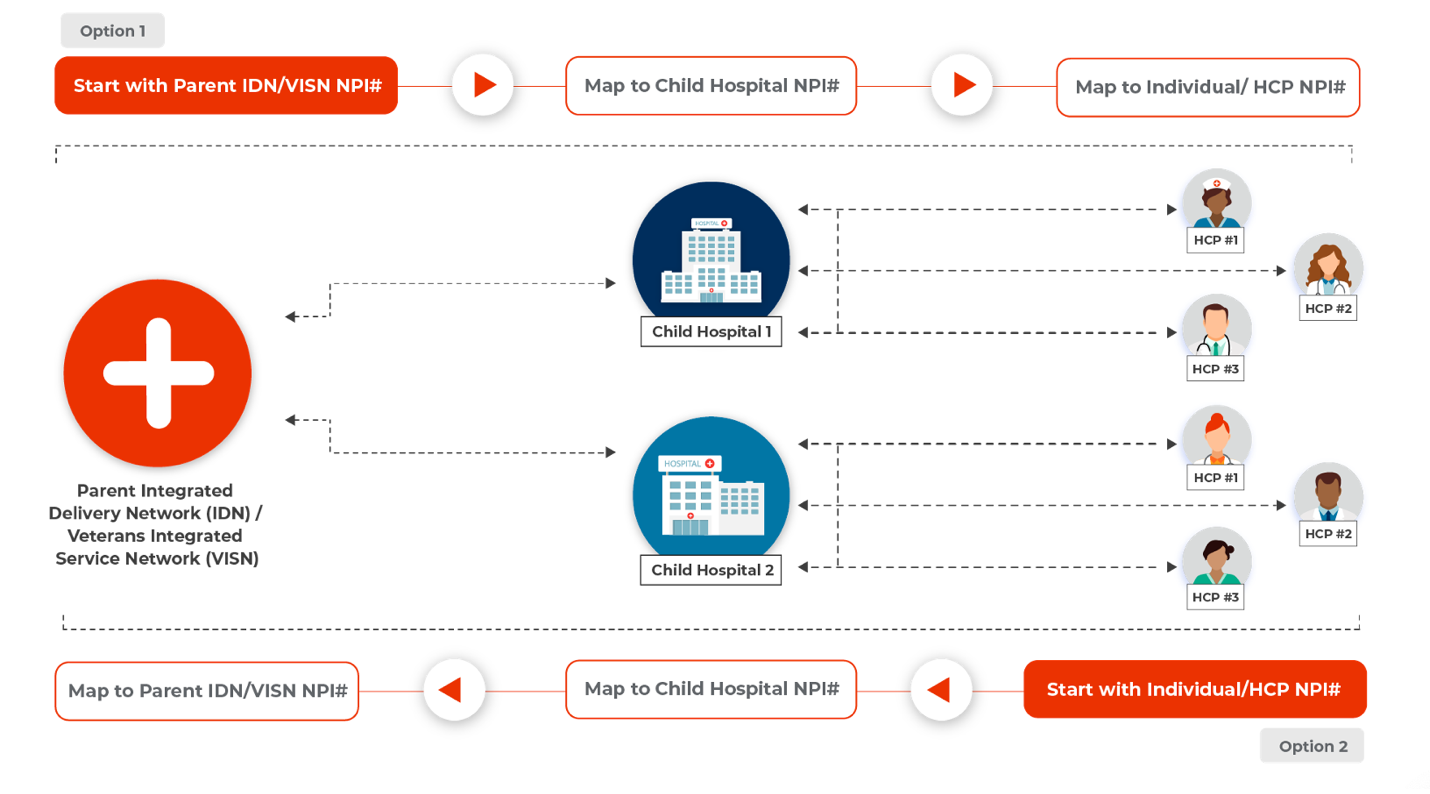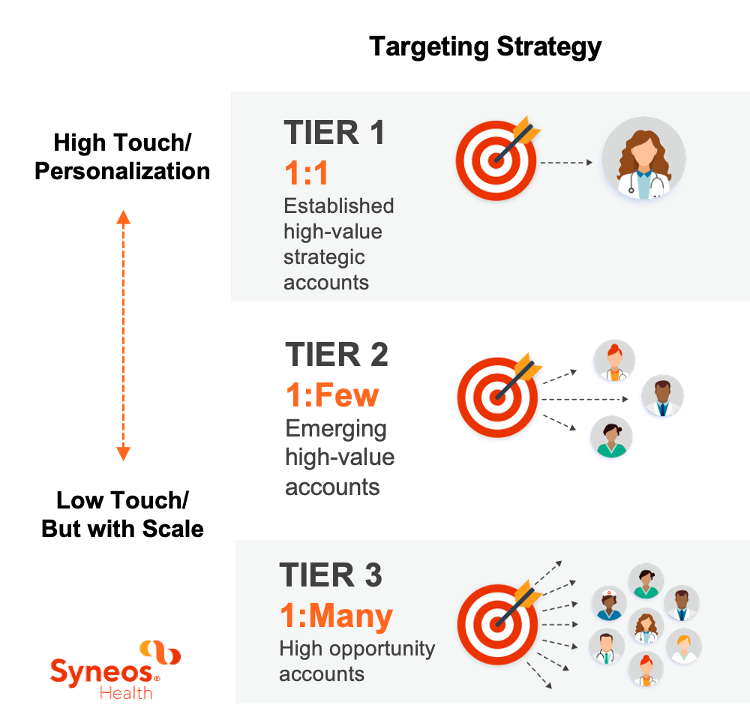Account-Based Marketing: The Marketing Strategy That Simplifies Health System Account Outreach
We don’t talk about account-based marketing (ABM) much in the pharmaceutical industry. Even though it is commonly used in other fields, in pharma, it has been slow to take hold because, before now, it has been viewed as a resource-heavy undertaking in a complex and fragmented healthcare system.
But today, advances in data science, technology and programmatic media delivery are making it easier for pharma marketers to navigate those complexities and benefit from ABM’s obvious competitive advantage. It makes sense now for pharmaceutical companies to seriously consider integrating account-based marketing into their yearly marketing plan alongside omnichannel and other tactics. In fact, in a recent Hubspot study, marketers said that 87% of ABM marketing outperforms other marketing activities.
What is Account-Based Marketing Exactly?
Account-based marketing focuses sales and marketing efforts on a handful of valuable accounts and embarks on high-touch campaigns with key stakeholders within those accounts. In pharma, that usually means first targeting the integrated delivery networks (IDNs), hospitals and medical practices most aligned with a campaign’s goals, and then building relationships with the administrators, healthcare providers (HCPs) and other influencers within those organizations.
In contrast to standard 1:1 HCP marketing where campaign efforts focus on single providers, ABM understands that pharmaceutical decisions at the broader system level depend on buy-in from a more diverse group of stakeholders. A formulary committee, for instance, often consists of a sample group of the organization: medical staff, pharmacists, prescribers, nurses, etc. That makes it imperative to reach each stakeholder individually and speak directly to their needs. When the whole group concurs, each of their own accord, a consensus to buy in and stay in is imminent.
To reach this point, marketers must pinpoint their list of top-valued accounts and know the team of decision-makers inside those accounts, so they can deliver message streams to each one to create alignment among the entire account. Consider it a B2B tactic that includes physician targeting as well as firmographic targeting (e.g., job title, job role and company). Another defining characteristic of ABM is that it works best as a collaboration between sales and marketing where it can act as a bridge between personal and non-personal promotion. The invaluable insights from sales reps communicating directly with stakeholders inform marketing strategies. According to surveyed ABM marketers, campaigns that prioritize a team effort in ABM are 6% more likely to exceed revenue goals.
How Data Simplifies ABM
From a marketing perspective, ABM may sound straightforward. But given the breadth and depth of large healthcare systems, identifying accounts and their groups of stakeholders, not to mention factoring in purchasing organization affiliation and market access considerations, can be daunting without first employing a data science perspective. A company will know who their top accounts are, including the stakeholders. But as they go deeper and want to widen the field with look-alike accounts, without expert data analyzation, it’s nearly impossible to locate all the pieces and put them together.
Today’s pharmaceutical ABM campaigns rely on institutional and individual NPI# data and Dunn and Bradstreet numbers (DNBs) to help pinpoint accounts and their corresponding HCP and non-HCP decision-makers by title. They do this by running segmentation analyses against the data. Once an IDN is identified, analysts can find the hospital members and individuals linked to that larger system. The reverse is also true. Figure 1 illustrates how data can forge a path from IDNs down to stakeholders and vice versa.
Figure 1: ABM NPI Mapping Flowchart

Furthermore, to create a steady flow of active accounts, ABM divides prospects into tiers:
- Tier 1 accounts are the strongest leads. Those are the highest touch accounts whose targets receive 1:1 engagement.
- Tiers 2 and 3 are increasingly more general in audience and message strategy. The goal of reaching all three at once is to eventually move emerging Tier 2 and 3 accounts into the Tier 1 position.
Figure 2: ABM Target Strategy

Personalized Automated Delivery
Personalized messaging in ABM can mean a couple of things. First, it means delivering assets: custom emails, pertinent educational materials, account-specific landing pages, invite-only webinars, etc. that speak to decision-makers’ specific needs and keep campaigns top of mind. Second, personalized delivery is a combination of sales rep engagement and automated delivery of assets.
Sales reps create relationships in person and strengthen them with digital media delivery via digital media-enhanced CRMs and next-best action tools like those used in omnichannel marketing. With this capability in place, media experts can track a stakeholder’s engagement preferences: if they open more emails than they click on banners, for example, or if they engage more in the morning or at night. With this combination of personal and digital insight, sales and marketing can personalize message content and delivery to each individual stakeholder in the account. That’s a powerful combination.
Measuring Success in ABM
ABM measurement is much like traditional marketing measurement except, with ABM, success can be based on stakeholder type. For instance, you could measure Rx lift at the account level, or you can look at metrics based on individual stakeholder types, whether it is HCPs or some other non-HCP job title. You might, for example, want to see which HCPs are writing those scripts. Or you might want to see which job titles respond best to CTAs. Segmenting stakeholders helps understand how well an individual and group strategy is working at once.
While account-based marketing might not yet be on your radar, at Syneos Health, we see ABM as a huge value for pharma companies. If you are interested in learning more, contact Stephen Hoelper.
Contributors
Stephen Hoepler | SVP Product and Commercial Growth







